New York artist Daniel Arsham creates art out of Tiffany’s iconic blue box
A collaboration with a New York artist takes Tiffany’s iconic blue box and plays with notions about the passing of time.
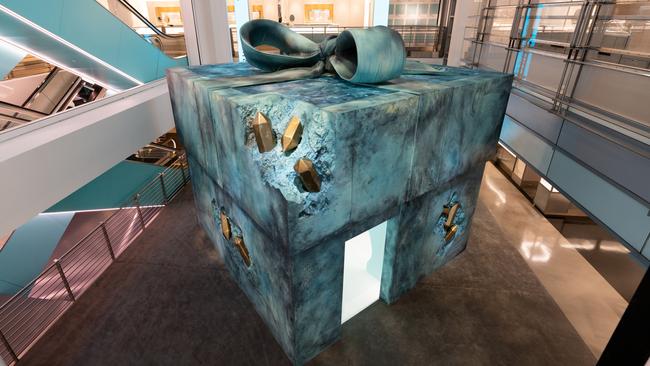
Normally it’s what’s inside a Tiffany & Co. box that makes your pulse quicken. But a collaboration with Daniel Arsham has resulted in a limited edition sculpture that elevates the iconic packaging into a work of art that might change your mind about the signature blue collateral.
Arsham has reimagined the familiar Tiffany packaging to create Blue Box, Circa 3021, featuring his Future Relic aesthetic. Cast in bronze, the limited edition artwork has transformed the Tiffany box into an archeological artifact eroded by time, with exposed details that recall derelict architecture. The familiar blue is mottled with age, and the softness of the ribbon has become hard, frozen in time. It’s a concept that lies at the heart of Arsham’s work – the deconstruction of the temporality of objects but as they might appear in the future, and reinterpreting them for today.
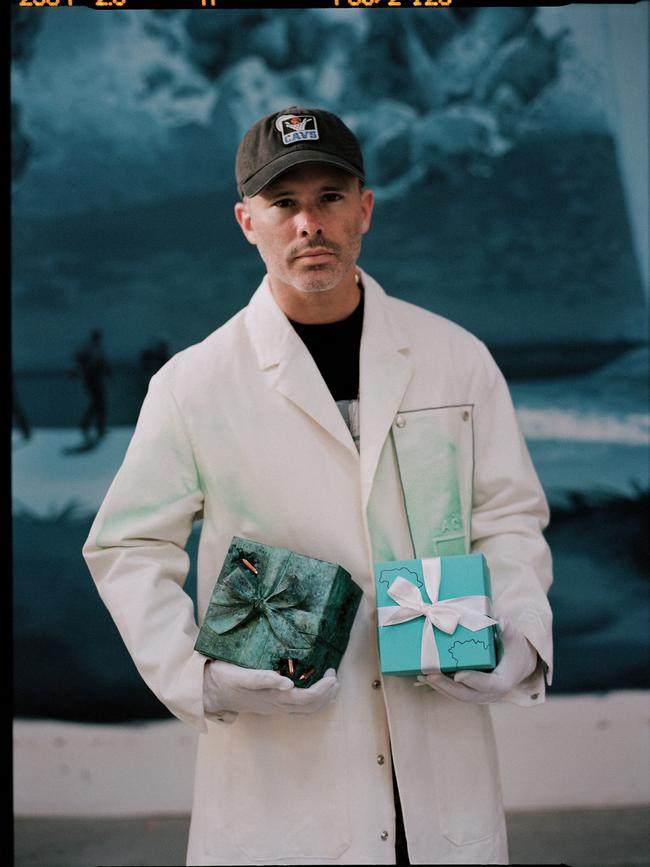
Speaking to WISH about the collaboration, Arsham explains that working with something as culturally significant as Tiffany’s box was the perfect opportunity to explore this theme in a way that would resonate with a global audience. Everyone, he says, knows this box.
“When I embarked on this project I was looking for something that’s immediately recognisable and iconic,” Arsham told WISH. “Something that I could project into the future and imagine what it might look like 1000 or 10,000 years from now. If you were to ask anyone in the world to name three New York brands, probably the first one that came to mind would be Tiffany. The Tiffany box is perfect because it represents all of those qualities.”
If anyone is surprised that Arsham would place such emphasis on a simple box, consider what that box represents. Countless expressions of love have been declared with it. For others, the box represents classic, timeless elegance. It is aspirational. But universally, it also represents a promise that whatever is inside embodies a particular idea of luxury.
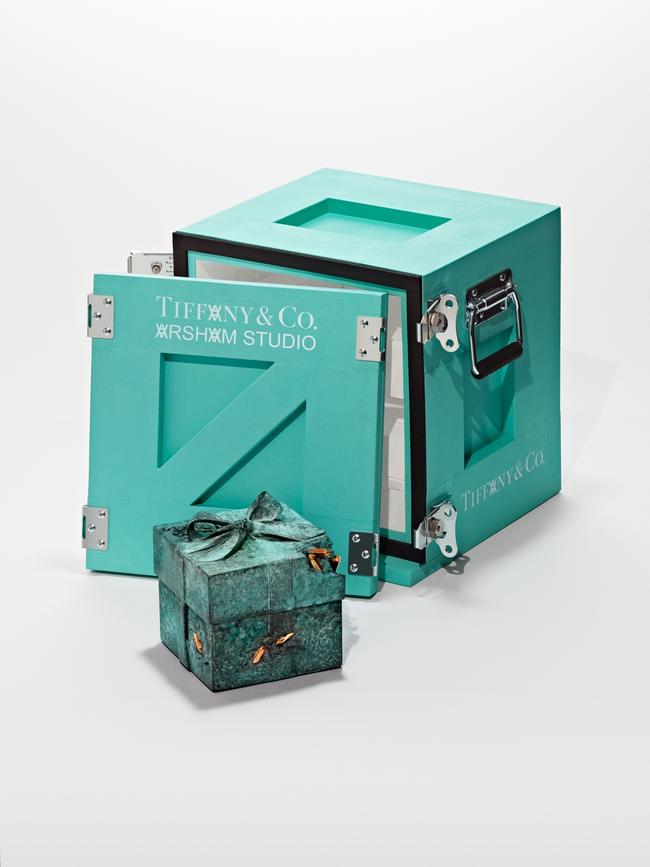
“Tiffany represents different things to different people around the world,” says Arsham. “Here in the US, it is a brand that many generations of American women are familiar with. Our wives, mothers and grandmothers know the brand. And the Tiffany box has become as iconic as the jewellery inside it.”
The New York-based artist has created only 49 of his signature boxes and it will set you back a hefty $66,000 to own one. It comes in its very own custom art-handling crate, created by Tiffany. Yes, your box will come within a box. Inside Arsham’s box is a limited-edition Tiffany Knot x Arsham Studio double-row bangle in 18k white gold peppered with brilliant tsavorites and diamonds. The choice of tsavorite was of particular importance to both the jewellery house and the artist. – Tiffany debuted the gemstone back in 1947 and it’s a shade of green often used by Arsham in his own work.
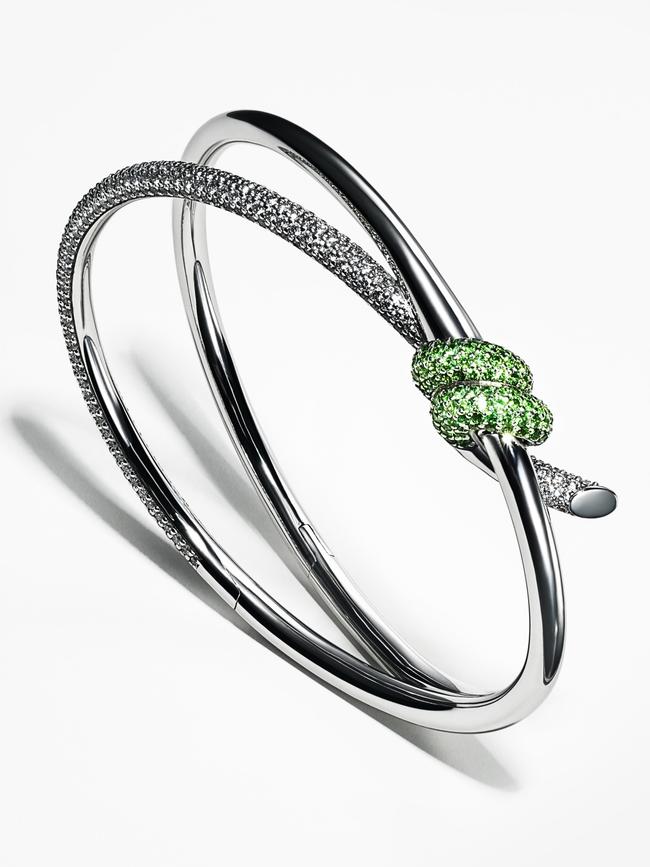
It’s impossible to ignore the contrast between Tiffany’s polished brand of today and Arsham’s Future Relic version, ravaged with age. But then you might be missing the point. In Arsham’s vision of the future, Tiffany remains timeless. Literally – the Tiffany box of 3021, so familiar in its design looks exactly as it does today. There’s also a brutal poetry to the sculpture, a subliminal message made all the more poignant when you think of the connection Tiffany has to those key life moments of love, marriage, even birth if you’re inclined to bestow a push present – that time is inexorable. And those moments that are happy are also precious. “My work imagines a contemporary object as if it were viewed from the future,” explains Arsham. “As though we’ve been transported to the future and brought the object back. And this time dislocation creates a sort of paradox in the object itself. You have this thing that you know from your current era, but it looks old.”
To achieve this ageing effect, Arsham deconstructed the most familiar element of the box’s design – the trademark Tiffany blue. “With the Bronze Eroded Tiffany Blue Box, we’ve applied a sort of aged patina on the boxes and, ironically, the colour of the patina is very similar to the Tiffany Blue. In fact, the patina itself is colloquially referred to as ‘Tiffany Green’.” Interestingly, and Arsham would surely have known this, Tiffany & Co. also acknowledge that the box isn’t just blue, it’s also green, and contains several codes alluding to the brand’s history. The custom colour has been produced by Pantone since 2001 and its PMS (Pantone Matching System) number is 1837, the year of Tiffany’s foundation. It could be said that in Arsham’s artwork, past and future meet on the box’s surface purely through the use of colour.
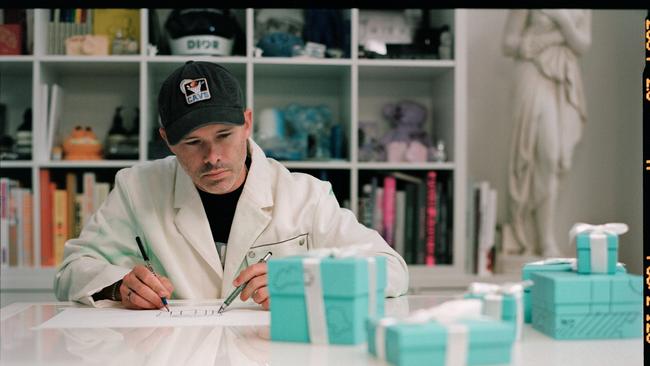
“I think these works sort of float in time,” he muses. “Obviously, the Tiffany Blue Box is iconic and from the era in which we live. But seeing it looking aged and sort of from some future era, there is a confusion that happens in time. We’re looking at an object that is potentially from a different era than our own. And I think that creates an interesting conflict.
“I think the notion of being able to step outside of your own lifespan is something fascinating. We all have a fascination with history that is revealed to us in reverse; we are all looking back. But could we look forward? Could we imagine what the archaeological relics of the future will be? To me, these archaeological relics will be the objects that surround us every day now. Many of these objects are those produced by brands, so thinking about these objects as makers of some potential future archaeology is really a compelling idea for a lot of people.”
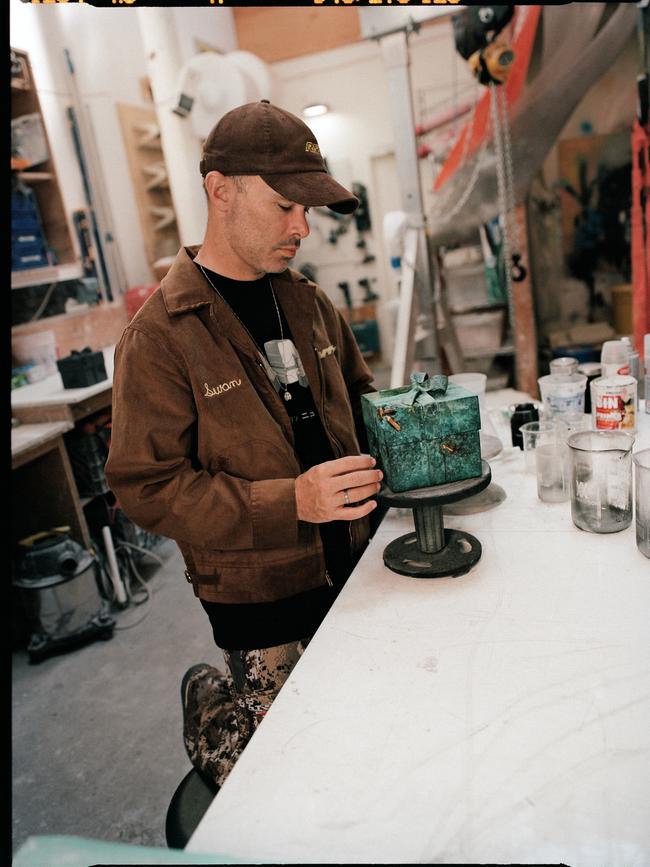
To say that this kind of collaboration is outside the box (sorry) for Tiffany would be both true and not true. While the company might be known for jewellery that speaks to romance or high jewellery spotted on red carpets, Tiffany has a long history of artistic collaboration. Previously it has worked with the likes of Paloma Picasso for a jewellery line that took inspiration from nature. Architect Frank Gehry played with concepts of concrete forms and organic life, and Andy Warhol created a line of Christmas cards for the company. Less direct but equally as impactful, with plenty of column inches dedicated to the messaging behind it, Tiffany & Co. featured a painting by fellow New Yorker Basquiat in a campaign with Beyoncé and husband Jay-Z. Arsham found an immediate affinity with these parallels of art, pop culture and branding while researching for his collaboration.
“When I visited the Tiffany Archive, it felt very much of my world,” he says. “I am deeply familiar with the materials, the techniques, the innovations that are on full display there. What was surprisingly one of my favourite parts was looking through the many vintage ads. Tiffany has a very clever way of branding where stark jewellery photography sits alongside cheeky taglines. We’ve actually developed a campaign around the collaboration that’s inspired by the advertisements from the archive.”

To join the conversation, please log in. Don't have an account? Register
Join the conversation, you are commenting as Logout